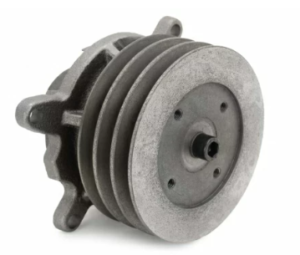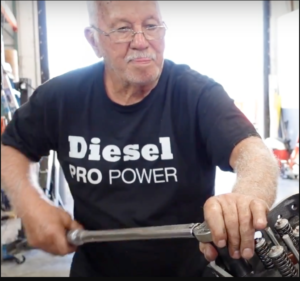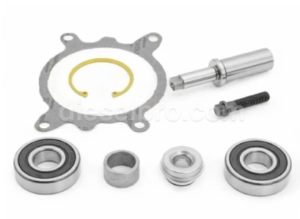
Changing Coolant (ELC) at 216,000 Liters (57,000 US Gallons) or 6000 Service Hours or Every 4 Years
The Caterpillar 3208 marine engine is known for its rugged dependability and efficient performance, even in the most demanding marine environments. To preserve its longevity and efficiency, extended interval servicing is required at 216,000 liters (57,000 US gallons) of fuel consumption, 6000 engine service hours, or every 4 years, whichever comes first.
At this milestone, the most critical service task is a complete coolant replacement using Extended Life Coolant (ELC). This guide will provide a comprehensive walkthrough, including why coolant changes are vital, step-by-step procedures, troubleshooting tips, safety guidelines, and long-term maintenance strategies — all without referencing or requiring any external links.
Why Coolant Change Matters for the Caterpillar 3208 Marine Engine

The Role of Coolant in Marine Diesel Engines
Coolant does more than regulate engine temperature. In the Caterpillar 3208 marine engine, coolant:
- Transfers heat from the engine block to the heat exchanger
- Prevents internal corrosion by coating metal surfaces
- Protects against cavitation in cylinder liners and pump impellers
- Maintains thermal balance during prolonged high-load operation
- Prevents freeze damage in cold climates
Over time, even high-quality ELC breaks down chemically. At this 6000-hour/4-year interval, the protective additives in the coolant are typically exhausted, and it must be completely replaced to ensure continued protection.
Understanding Extended Life Coolant (ELC)
What Is ELC?
Extended Life Coolant is a long-lasting, organic-acid-based coolant designed to provide superior protection without frequent additive treatments. Unlike conventional coolant which requires regular SCA additions, ELC is designed for stability over longer durations.
Benefits of Using ELC in the Caterpillar 3208
- Extended intervals between changes — up to 6000 hours
- Excellent corrosion resistance
- Reduced maintenance time and labor
- Minimized scaling and deposits
- Longer water pump and cylinder liner life
Symptoms of Degraded Coolant
Failing to change coolant on schedule can result in:
- Rusted coolant passages
- Overheating due to scale buildup
- Gasket damage or water pump failure
- Coolant discoloration or sedimentation
- Pitting in cylinder liners caused by cavitation
Discoloration, visible debris, or a pungent chemical smell are all signs it’s past time to replace the coolant.
Required Tools and Materials

To perform a complete coolant (ELC) change on the Caterpillar 3208 marine engine, gather the following:
- Clean containers for draining coolant
- Caterpillar-approved Extended Life Coolant
- Distilled water (if using concentrate)
- New coolant cap (if gasket is worn)
- Torque wrench
- Funnel
- Safety gloves and goggles
- Rags and absorbent materials
- Cooling system flushing solution (if contamination is present)
- Replacement gaskets or hoses if required
Step-by-Step Coolant Replacement Procedure
This procedure applies to all models of the Caterpillar 3208 marine engine configured for a closed-loop cooling system with heat exchanger.
Step 1: Engine Cool Down and Safety Prep
- Ensure the engine has not been operated for at least two hours.
- Do not attempt to open the cooling system when hot. Steam under pressure can cause serious burns.
- Disconnect the battery switch to prevent accidental engine startup.
- Don safety gloves and goggles.
Step 2: Drain the Old Coolant
- Open coolant drain valve located on the engine block or at the bottom of the heat exchanger.
- If the engine has multiple drains, open them all to remove coolant from all compartments.
- Collect coolant in suitable containers for environmentally compliant disposal.
- Remove the coolant pressure cap slowly to break vacuum and complete draining.
Note: If coolant appears sludgy, discolored, or smells like fuel or oil, you may need to flush the system thoroughly.
Step 3: Inspect Components While Drained
While the coolant system is open:
- Inspect the thermostat and housing for corrosion or scale buildup
- Check the water pump for signs of coolant weepage or bearing noise
- Examine all hoses and clamps for softness, cracks, or leaks
- Look at the coolant pressure cap — if the seal is worn or the spring tension is weak, replace it
- Verify that the zinc anodes in the heat exchanger are not eroded
Step 4: Optional – Flush the Cooling System
If coolant was heavily contaminated or overdue:
- Reinstall drain plugs.
- Fill system with distilled water and a mild system cleaner.
- Run the engine to operating temperature (typically 180°F or 82°C).
- Shut down, let cool, and drain completely.
- Repeat with clean water until water drains clear.
Step 5: Refill with ELC
- Close all drains and confirm torque values.
- Fill system with Caterpillar-approved ELC, using either:
- 50/50 pre-mix (preferred)
- Concentrate plus distilled water mixed in proper ratio (typically 1:1 unless otherwise specified)
- Fill slowly to prevent air locks.
- Leave the pressure cap off and start the engine. Run at idle for 10 minutes, then at 1500 rpm for 2–3 minutes.
Step 6: Bleed the System
- Shut down the engine and check coolant level.
- Add more coolant if the level has dropped.
- Install pressure cap and check the system for leaks.
- Inspect sight glass (if equipped) for coolant level.
Step 7: Dispose of Old Coolant
- Used coolant must never be dumped overboard or into local drains.
- Use an approved recycling or disposal service.
Post-Service Checks
After changing the coolant:
- Check coolant level again after the first full operation cycle.
- Monitor engine temperature during sea trial.
- Reinspect for leaks around drain plugs, gaskets, and hose clamps.
Coolant Maintenance Tips Moving Forward
Fresh Water or Coolant Pump Rebuilt kit for Caterpillar 3208 engines
Maintain System Pressure
- The coolant pressure cap helps raise boiling point and maintain proper coolant flow. Replace it every 2–4 years.
Inspect Heat Exchanger and Zinc Rods
- Zinc rods should be inspected or replaced every 250–500 hours to prevent internal corrosion of the heat exchanger.
Monitor Water Pump
- Check for leaks around the weep hole, pulley wobble, and unusual noise. Replace if any signs of failure exist.
Watch for Air Locks
- If your engine overheats after a coolant change, suspect an air pocket in the cylinder head or heat exchanger. Purge the system as needed.
Common Mistakes to Avoid
- Mixing coolant types – ELC should never be mixed with conventional green or hybrid coolants.
- Using tap water – Tap water introduces minerals that reduce cooling efficiency and cause scaling.
- Skipping flushing – When overdue for a change, flushing is necessary to remove old additives and contaminants.
- Ignoring leaks – Small leaks reduce pressure and efficiency. Address them immediately.
- Reusing old coolant – Even if it “looks clean,” aged coolant lacks chemical protection.
Signs It’s Time to Replace Coolant Even Sooner
- Presence of rust or metallic flakes in the coolant
- Coolant is brown, black, or milky
- Overheating issues not caused by thermostat or pump
- Drop in coolant level without external leaks (may indicate internal leakage or evaporation)
Long-Term Cooling System Health Plan
| Task | Interval |
| Visual coolant inspection | Monthly |
| Coolant top-up (if needed) | As required |
| ELC additive extender (if applicable) | At 3000 hours |
| Full coolant replacement | Every 6000 hours or 4 years |
| Replace pressure cap | Every 2–4 years |
| Replace water pump (if worn) | As needed |
| Heat exchanger cleaning | Every 1000 hours |
Final Notes on Extended Interval Coolant Change for the Caterpillar 3208 Marine Engine
Changing coolant at this extended interval is not optional — it is a core preventive measure that protects one of the most expensive and critical systems on your vessel. The Caterpillar 3208 marine engine was built for long service life, but only if you follow a diligent and disciplined maintenance routine.
This 6000-hour milestone is an ideal time to:
- Rethink your full cooling system strategy
- Replace worn gaskets, hoses, and clamps
- Pressure test the system
- Document service for resale or regulatory compliance
Disclaimer
This guide is intended as a practical reference for experienced marine engine technicians and operators. Always consult the official Caterpillar Operation & Maintenance Manual for torque specifications, cooling system capacity, and safety instructions specific to your 3208 model.
Additional Resources
Practical Guide To Servicing The Caterpillar 3208 Marine Engine
Marine CAT 3208 Component Maintenance Life
Caterpillar 3208 Injectors: High-Quality Aftermarket Options from Diesel Pro Power
The History of the Caterpillar 3208 Engine
Common Applications of the Caterpillar 3208 Engine
Troubleshooting Common Issues with the Caterpillar 3208
Maintenance Tips for Maximizing the Life of Your Caterpillar 3208 Engine
Comparing the Caterpillar 3208 to Other Marine Engines



 Free US Calls: 1-888-433-4735
Free US Calls: 1-888-433-4735 International: 305-545-5588
International: 305-545-5588
